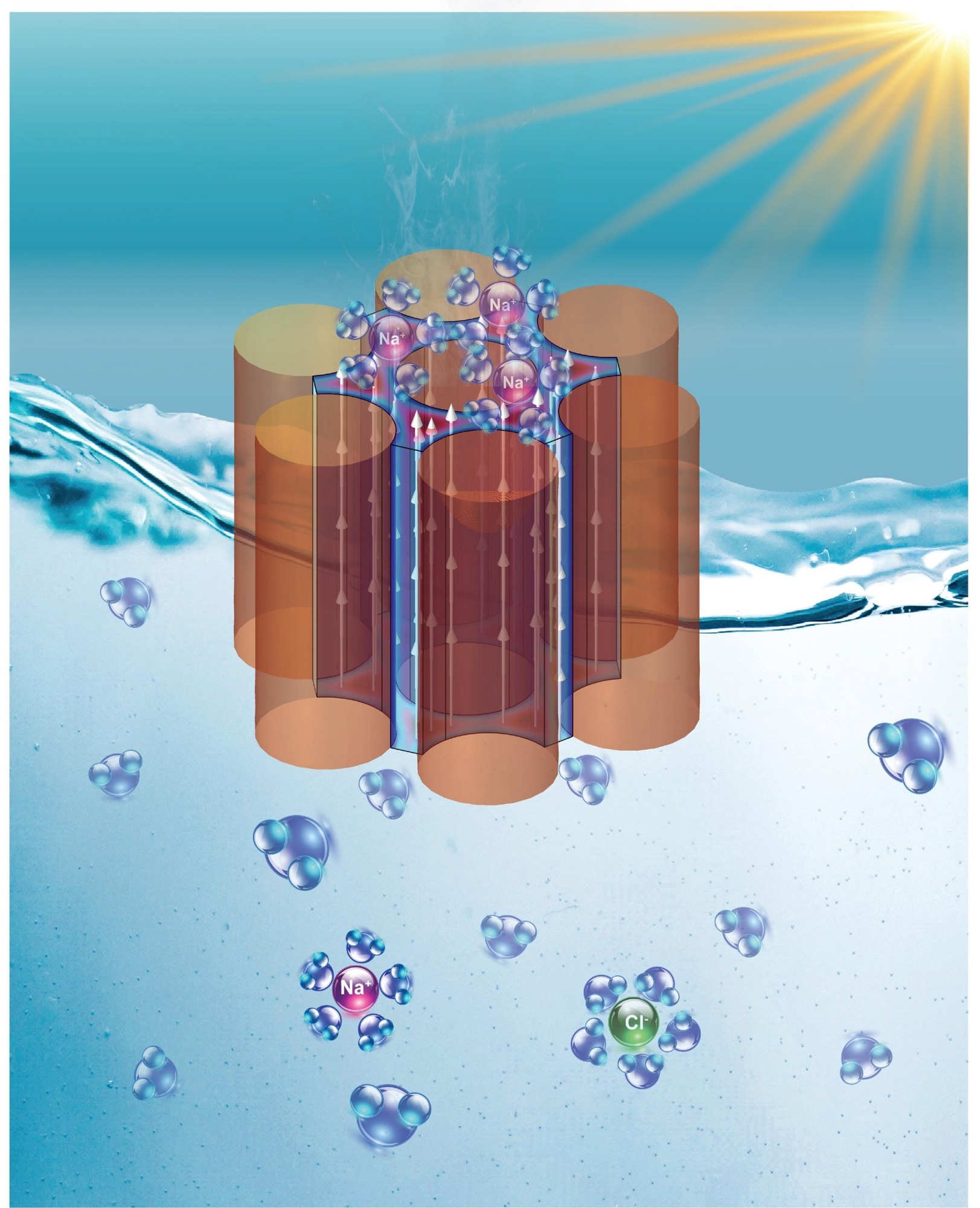École Polytechnique Fédérale de Lausanne (EPFL) scientists have found that nanoscale devices utilizing the hydroelectric effect can generate electricity when water evaporates fluids with higher ion concentrations than purified water. This discovery unveils a vast unexploited energy potential.
 Schematic of an evaporation-driven HV system. Image Credit: Tarique Anwar, LNET EPFL, CC BY SA
Schematic of an evaporation-driven HV system. Image Credit: Tarique Anwar, LNET EPFL, CC BY SA
Evaporation is such a common natural process that most of us overlook its significance. Surprisingly, about half of the solar energy that reaches the Earth triggers evaporation.
Since 2017, scientists have been exploring the potential of harnessing evaporation's energy potential through the hydrovoltaic (HV) effect. This effect enables electricity generation when a fluid flows over the charged surface of a nanoscale system.
Evaporation creates a continuous flow inside the nanochannels of these devices, essentially acting as passive pumping mechanisms. This phenomenon mirrors what happens in the microcapillaries of plants, where water transport is facilitated by a combination of capillary pressure and natural evaporation.
While hydrovoltaic devices already exist, there is a limited understanding of the circumstances and physical phenomena that rule HV energy production at the nanometer scale.
Recognizing this gap, Giulia Tagliabue, head of the Laboratory of Nanoscience for Energy Technology (LNET) in the School of Engineering, and PhD student Tarique Anwar sought to address it. They employed a combination of multiphysics modeling and experiments to analyze ion flows, fluid flows, and electrostatic effects resulting from solid-liquid interactions. They aimed to optimize HV devices.
Thanks to our novel, highly controlled platform, this is the first study that quantifies these hydrovoltaic phenomena by highlighting the significance of various interfacial interactions. But in the process, we also made a major finding: that hydrovoltaic devices can operate over a wide range of salinities, contradicting prior understanding that highly purified water was required for best performance.
Giulia Tagliabue, Head, Laboratory of Nanoscience for Energy Technology, School of Engineering, EPFL
Details of this study were reported in the Cell Press journal Device.
A Revealing Multiphysics Model
The device created by the researchers signifies the first HV application of a method known as nanosphere colloidal lithography that enables the creation of a hexagonal network of precisely spaced silicon nanopillars. The gaps between these nanopillars form ideal channels for evaporating fluid samples. Importantly, this setup can be finely tweaked to gain a deeper understanding of the impacts of fluid confinement and the solid-liquid contact area.
In most fluidic systems containing saline solutions, you have an equal number of positive and negative ions. However, when you confine the liquid to a nanochannel, only ions with a polarity opposite to that of the surface charge will remain. This means that if you allow liquid to flow through the nanochannel, you will generate current and voltages.
Tarique Anwar, Ph.D. Student, EPFL
Tagliabue added, “This goes back to our major finding that the chemical equilibrium for the surface charge of the nanodevice can be exploited to extend the operation of hydrovoltaic devices across the salinity scale. Indeed, as the fluid ion concentration increases, so does the surface charge of the nanodevice. As a result, we can use larger fluid channels while working with higher-concentration fluids. This makes it easier to fabricate devices for use with tap or seawater, as opposed to only purified water.”
Water, Water Everywhere
Due to its ability to occur continuously across a broad range of humidities and temperatures, including at night, evaporation offers numerous stimulating potential applications for more efficient HV devices.
The scientists hope to investigate this potential with assistance from a Swiss National Science Foundation Starting Grant, which aims to formulate “a completely new paradigm for waste-heat recovery and renewable energy generation at large and small scales,” including a sample module under everyday conditions on Lake Geneva.
Furthermore, since HV devices could theoretically function at any place where there is liquid or even moisture, such as sweat, they could be utilized to drive sensors for connected devices, ranging from health and fitness wearables to smart TVs.
Tagliabue, leveraging LNET’s expertise in harvesting light energy and storage systems, is also interested in exploring how light and photothermal effects could be employed to manipulate surface charges and evaporation rates in HV devices.
Finally, the team also sees key synergies between HV devices and the generation of clean water.
Anwar concluded, “Natural evaporation is used to drive desalination processes, as fresh water can be harvested from saltwater by condensing the vapor produced by an evaporative surface. Now, you could imagine using an HV system both to produce clean water and harness electricity at the same time.”
Journal Reference:
Anwar, T. & Tagliabue, G. (2024) Salinity-dependent interfacial phenomena toward hydrovoltaic device optimization. Device. doi:10.1016/j.device.2024.100287.
Source: https://actu.epfl.ch